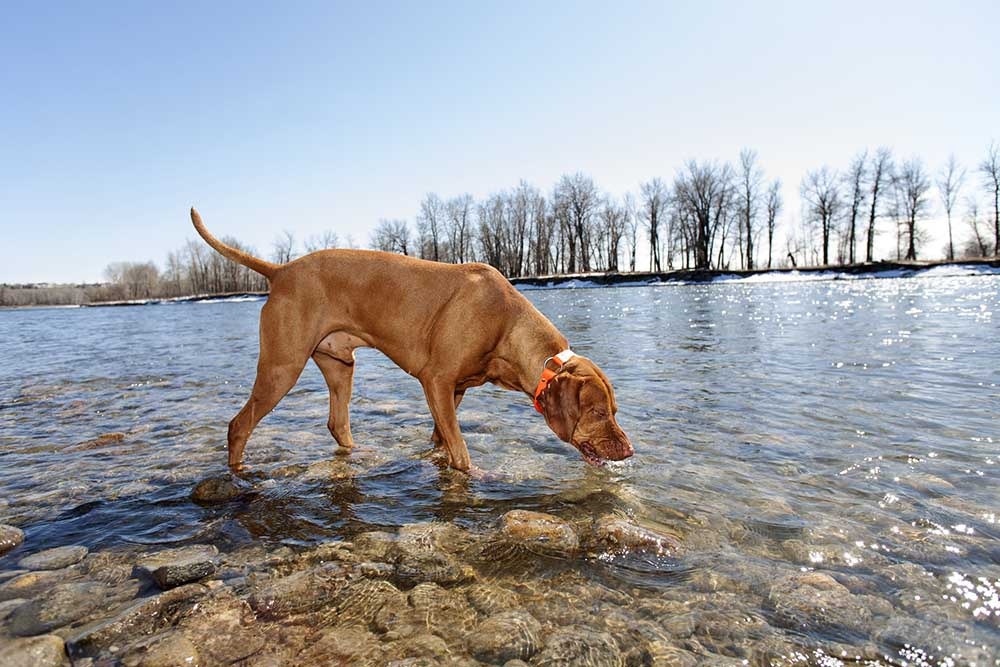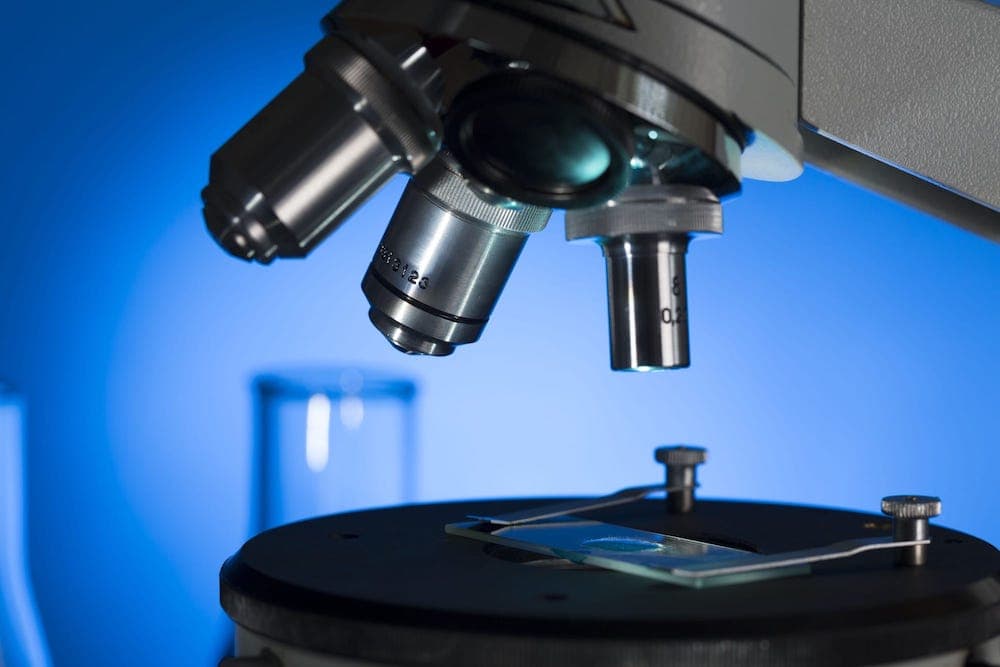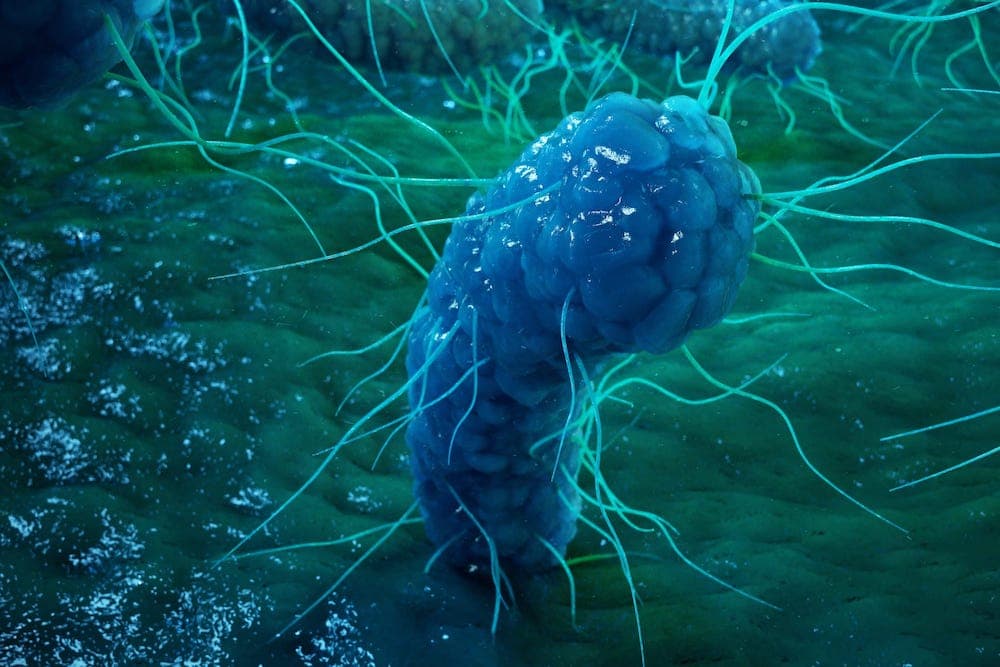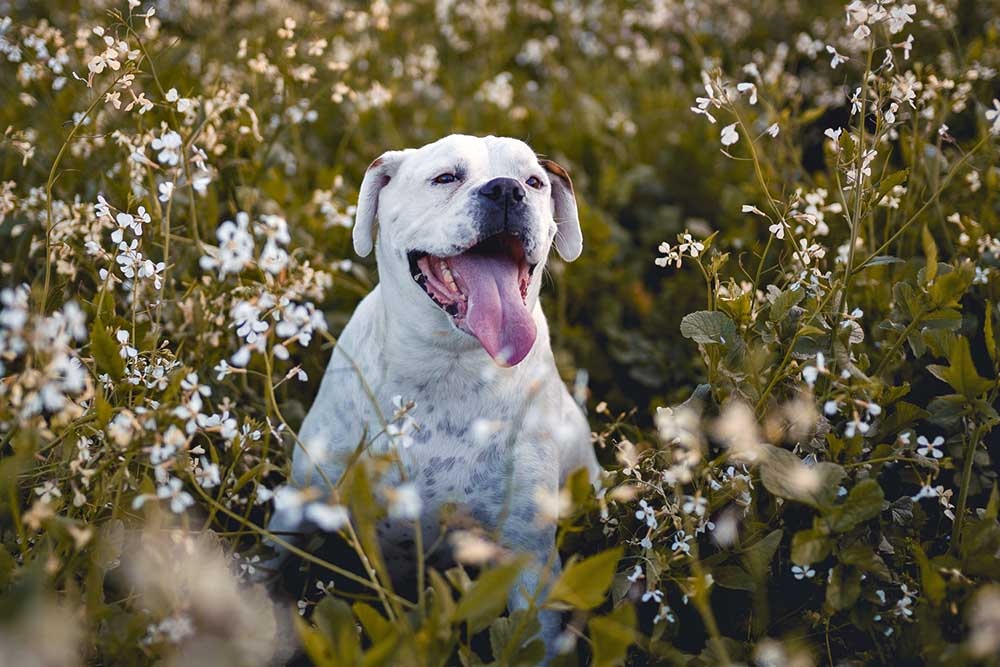Learn : Health & Wellness
Giardia & Its Link to the Microbiome
The bacteria that make up an animal’s gut microbiota generally provide astounding health benefits in terms of metabolism and nutrition. However, bacteria also influence the immune system of their host1. Our microbiota
What is Giardia?
Traveler’s diarrhea and beaver fever—names that can strike fear into the hearts of most humans with thoughts of being glued to the toilet upon return from vacation—are commonly used to refer to intestinal symptoms caused by the single-celled parasite Giardia duodenalis (also known as G. lamblia or G. intestinalis)3. Giardia is found in soil, food, and water contaminated with fecal matter. Simply touching contaminated surfaces or compounds is not enough to transmit the parasite; it must be ingested from contaminated food or water to cause infection4,5. Symptoms of Giardia can last 1 to 2 weeks and include diarrhea, abdominal cramps, nausea/vomiting, and dehydration6.
Humans around the globe can be infected by Giardia, and in the United States, it is the most common intestinal parasitic disease7. But it doesn’t affect just humans: pets are also susceptible. There are seven genotypes (or genetic variants) of the parasite: A through G. While humans are most susceptible to genotypes A and B, dogs are commonly infected with C and D. Cats can also be infected with genotype F4,5. Transmission from pets to humans is possible but quite rare8.
Unlike humans, dogs and cats often sniff or lick their surroundings and thus may also contract Giardia by eating or sniffing
Giardia and the Microbiome
Microbial dysbiosis, or imbalance between good and bad bacteria, is often observed in intestinal disease9. Alterations in the composition of the microbiome are thought to influence chronic intestinal diseases such as inflammatory bowel disease10, colon cancer, and type 2 diabetes9. However, shifts in gut bacterial populations have also been observed for parasites like Giardia11.
A study from 201511 looked at differences in the fecal microbiome of dogs and cats in Australia that were positive for various parasites, such as Giardia, hookworms, and coccidia. Using DNA sequencing, they found that there was a slight difference in bacterial populations between dogs that were infected with Giardia and those that were not, while no differences were observed in dogs infected with other types of parasites. Conversely, differences were not as obvious in Giardia-infected cats.
Of note, the animals included in the study were clinically healthy, meaning that they were not showing any symptoms. Giardia can be present in healthy animals without causing illness, albeit at a low rate, and these results show that it may be associated with certain bacterial species. However, it is also possible that larger shifts would be seen in animals that are symptomatic. Future research more fully characterizing the gut microbiome and comparing sick vs. healthy animals will be enlightening.
Giardia and Changes in the Microbiome
Although many Giardia infections do not have clinical symptoms, some individuals fall victim to intestinal distress. Exactly how the parasite causes these symptoms has proven somewhat mysterious to scientists. Unlike bacteria, Giardia does not produce any toxins and intestinal tissues often seem normal during infection12. However, recent research has suggested that Giardia infection may modify the gut environment in a way that causes diarrhea and other associated symptoms13.
When mice are infected with Giardia parasites, the microbial community throughout the entire gastrointestinal tract changed compared to healthy animals13. This finding hints that parasite colonization upsets the normal gut
If Giardia symptoms are indeed due to alterations in the gut microbiome, then treatments targeting the restoration of beneficial bacteria populations could help patients. Probiotic treatments—which are formulations of living bacteria—have been shown to help animals with Giardia infections. Giving Enterococcus faecium to mice before exposure to the parasite has been shown to increase their immune responses against Giardia15. In a similar vein, treating gerbils with Saccharomyces boulardii before Giardia infection reduced disease and the parasite load16.
Your Pet and Giardia
Most pets come into contact with Giardia through contaminated feces or soil, as well as drinking water from contaminated water sources. As a pet parent, it may be hard to deny your dog a romp in your local river or lake, but bodies of water can be a source of infection, particularly those that surround commonly infected farm animals like calves and lambs17. Most cases are asymptomatic and in
References
1. Thaiss, C. A.,
2. Excessive Bacteria in the Small Intestine in Dogs | petMD. Available at: https://www.petmd.com/dog/conditions/digestive/c_multi_small_intestinal_bacterial_growth. (Accessed: 5th December 2018)
3. General Information| Giardia | Parasites | CDC. Available at: https://www.cdc.gov/parasites/giardia/general-info.html. (Accessed: 5th December 2018)
4. Giardia in Cats. vca_corporate Available
5. Giardia in Dogs. vca_corporate Available
6. Illness & Symptoms| Giardia | Parasites | CDC. Available at: https://www.cdc.gov/parasites/giardia/illness.html. (Accessed: 5th December 2018)
7. Sources of Infection & Risk Factors| Giardia | Parasites | CDC. Available at: https://www.cdc.gov/parasites/giardia/infection-sources.html. (Accessed: 5th December 2018)
8. Giardia & Pets | Giardia | Parasites | CDC. Available at: https://www.cdc.gov/parasites/giardia/prevention-control-pets.html. (Accessed: 5th December 2018)
9. Carding, S., Verbeke, K., Vipond, D. T., Corfe, B. M. & Owen, L. J. Dysbiosis of the gut microbiota in disease. Microb. Ecol. Health Dis. 26, 26191 (2015).
10. Omori, M. et al. Fecal microbiome in dogs with inflammatory bowel disease and intestinal lymphoma. J. Vet. Med. Sci. 79, 1840–1847 (2017).
11. Šlapeta, J., Dowd, S. E., Alanazi, A. D., Westman, M. E. & Brown, G. K. Differences in the
12. Bartelt, L. A. & Sartor, R. B. Advances in understanding Giardia: determinants and mechanisms of chronic sequelae. F1000Prime Rep. 7, 62 (2015).
13. Barash, N. R., Maloney, J. G., Singer, S. M. & Dawson, S. C. Giardia Alters Commensal Microbial Diversity throughout the Murine Gut. Infect. Immun. 85, (2017).
14. Solaymani-Mohammadi, S. & Singer, S. M. Host immunity and pathogen strain contribute to intestinal disaccharidase impairment following gut infection. J. Immunol. 187, 3769–3775 (2011).
15. Benyacoub, J. et al. Enterococcus
16. Ribeiro, M. R. S. et al. Effect of probiotic Saccharomyces
17. GIARDIA: DRINKING WATER FACT SHEET, www.epa.gov.



 Microbiome And Its Relationship To Health
Microbiome And Its Relationship To Health
 Evolution of Microbiome Research
Evolution of Microbiome Research
 Microbes in the Gut
Microbes in the Gut
 Allergies & Probiotics
Allergies & Probiotics